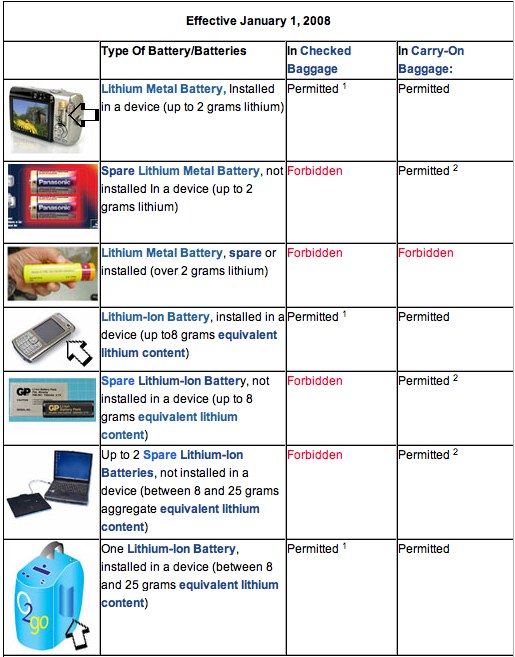With the exception of a pipe bomb I once saw on the news, I don't think I've ever seen what a regular bomb looks like. Have you? It's an important question because the TSA is apparently willing to confiscate something (in this case, batteries) that it knows isn't a bomb, but that it still considers a threat because it looks like a bomb to other people (other people that don't know what a bomb looks like). <a href="http://www.schneier.com/blog/archives/2008/07/tsa_proud_of_co.html">Writes Bruce

With the exception of a pipe bomb I once saw on the news, I don't think I've ever seen what a regular bomb looks like. Have you? It's an important question because the TSA is apparently willing to confiscate something (in this case, batteries) that it knows isn't a bomb, but that it still considers a threat because it looks like a bomb to other people (other people that don't know what a bomb looks like). Writes Bruce Schneier of the incident...
the average person doesn't know what a bomb looks like; all he knows is what he sees on television and the movies. And this rule means that all homemade electronics are confiscated, because anything homemade with wires can look like a bomb to someone who doesn't know better. The rule just doesn't work.
Perhaps even more interesting is the part that got under Schneier's skin: the fact that the TSA issued something of a chest-thumping press release over the matter. According to the relesase:
Transportation Security Officer Scot Peele leveraged his training and experience when he detected the suspicious item while monitoring the X-ray image of the passenger's carry-on bag....The item in question was determined to be an empty metal bottle and a home-made battery pack...The passenger was an engineer and said he built the battery to power his DVD player for the long flight to Hawaii...the man surrendered it to Supervisory TSO Raiford Patterson and was allowed to board the flight.
Deserving of a separate post altogether, this battery-cum-bomb incident serves as a reminder that the federal government instituted new rules on Jan. 1, 2008, regarding rechargeable batteries in both carry-on and checked luggage. Earlier this year, while with a member of TechWeb's video team passing through the security checkpoint at an airport (he had lots of extra batteries with him), I asked one of the TSA personnel about the new battery policy and he responded: "I have no idea what you're talking about."
In some respects, neither do we. You'll need a degree in engineering to make sense of the online guidelines (pictured below).

About the Author(s)
You May Also Like





